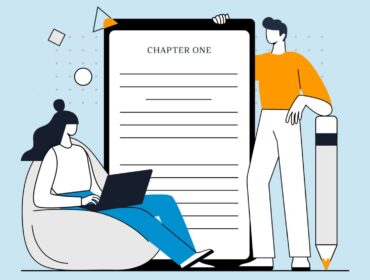The Science of AI: Fantastic Facts We Learned from the Movie Artificial Intelligence
Artificial Intelligence is a topic that has been discussed and debated for years now. It’s one of those topics that leave people feeling uneasy about its implications. The idea of machines thinking for themselves and being able to surpass the capabilities of humans has always seemed like something that’s just a little too fantastical to be true, right? Well, there’s no need to worry because artificial intelligence isn’t going anywhere anytime soon. This article will give you fantastic facts you probably didn’t know about AI after watching the Reelcraze movie Artificial Intelligence.
AI: What You Need If You Don’t Know Anything About AI
Artificial Intelligence is the ability of machines to perform tasks that usually require human intelligence. As a concept, AI has been around for a long time. It was first coined by the British mathematician Alan Turing, who is often credited as one of the “fathers” of AI. AI has been around for a long time. It was first coined by the British mathematician Alan Turing, who is often credited as one of the “fathers” of AI. Today, AI is everywhere. You use it to find information on the internet, to play games like chess or to train a computer program to recognize your face. AI is still a very young technology, and it has many potential applications that we haven’t even thought of yet.
What is Artificial Intelligence?
Artificial intelligence is a field of study that aims to create “artificial” systems that can perform tasks that require human intelligence, such as understanding human speech or solving problems. AI is related to but distinct from computer science, which deals with the design and implementation of computer algorithms. AI is also distinct from statistics, which is the study of the design of sample-size and probability-size estimators using information from data. AI is related to but distinct from computer science, which deals with the design and implementation of computer algorithms. AI is also distinct from statistics, which is the study of the design of sample-size and probability-size estimators using information from data.
The History of Artificial Intelligence
The history of artificial intelligence goes all the way back to the 1950s, when researchers first realized that computers could be Reel Craze programmed to perform cognitive tasks, like identifying patterns and making decisions. Since then, AI has grown into a very broad field. While scientists once focused on just a few specific areas, AI is now used to solve a wide range of problems, from making web search results more reliable to finding new medical treatments. These challenges can be hard to solve, however, as AI is often used to try to solve “black-box” problems, where it’s unclear exactly what the solution is and what the inputs and outputs should be.
AI and Robotics
Artificial intelligence has become an integral part of robotics. Robots are now able to use AI to recognize objects and navigate around the world. AI has also been used to develop robots that can learn by example, allowing them to adapt to new situations and tasks. Robots can now be trained using deep neural networks that let them learn by watching and imitating human behavior.
AI has also been used to create robots that can interact with humans in more natural ways. These robot assistants can now interact with humans using natural language, recognize faces, perform simple tasks and more. As we continue to use AI in robotics, we’ll see more and more robots that can navigate and interact with the world autonomously. Robots can now be trained using deep neural networks that let them learn by watching and imitating human behavior.
AI has also been used to create robots that can interact with humans in more natural ways. These robot assistants can now interact with humans using natural language, recognize faces, perform simple tasks and more. As we continue to use AI in robotics, we’ll see more and more robots that can navigate and interact with the world autonomously.
Will Robots Take Over?
Artificial intelligence is bringing us closer and closer to the day when robots become more capable than humans. While there’s still a ways to go, we’ve already seen AI help rescue people during disasters.
AI is also helping businesses optimize their operations and become more customer-focused. As AI continues to mature, we’ll see less need for human workers, who will instead be replaced by robots.
But AI is also helping to make robots more human-like, with things like emotion detection that help robots react to situations more like humans do. This trend to replace humans with robots isn’t limited to the workplace either. AI is helping to revolutionize healthcare by reading medical images and making diagnoses. It’s also helping to make self-driving cars that can safely navigate busy streets.
How will we use AI?
Artificial intelligence is being used to help identify speech patterns, recognize objects and navigate the world around us. AI is also being used in healthcare applications, where it can be used to identify medical images and make diagnoses.
But AI is also being used to make more personal products, from self-driving cars to home assistants like Alexa or Siri. AI is also being used to help businesses optimize operations and find new ways to use data. AI is also helping to make robots more human-like by using deep learning to give robots human-like personalities. AI is also being used in the financial sector to help decide which stocks to buy.
Which fields are most likely to be affected by AI?
AI is making meaningful progress in a wide variety of fields, including machine learning, natural language processing and computer vision. This has led to concerns that AI will replace humans in a wide range of jobs, from lawyers to truck drivers. And while there’s a chance that could happen, it’s important to note that AI is often used to help humans do their jobs better, not replace them completely. In fact, AI is most often used to help humans do their jobs, from scheduling workers to optimizing operations. AI is also helping to make self-driving cars that can safely navigate busy streets. There’s also an opportunity for AI to help improve the human experience for everyone. For example, AI can help analyze customer feedback to understand what customers like and what can be improved next time.
Conclusion
Artificial intelligence is something that many people are afraid of, but it is also something that will shape our future and will be a huge part of our lives. AI is used to help humans perform tasks that usually require human intelligence, like understanding human speech or solving problems. AI is also being used to make more personal products, like home assistants and self-driving cars, and to help businesses optimize operations and find new ways to use data. There’s also an opportunity for AI to help improve the human experience for everyone.












